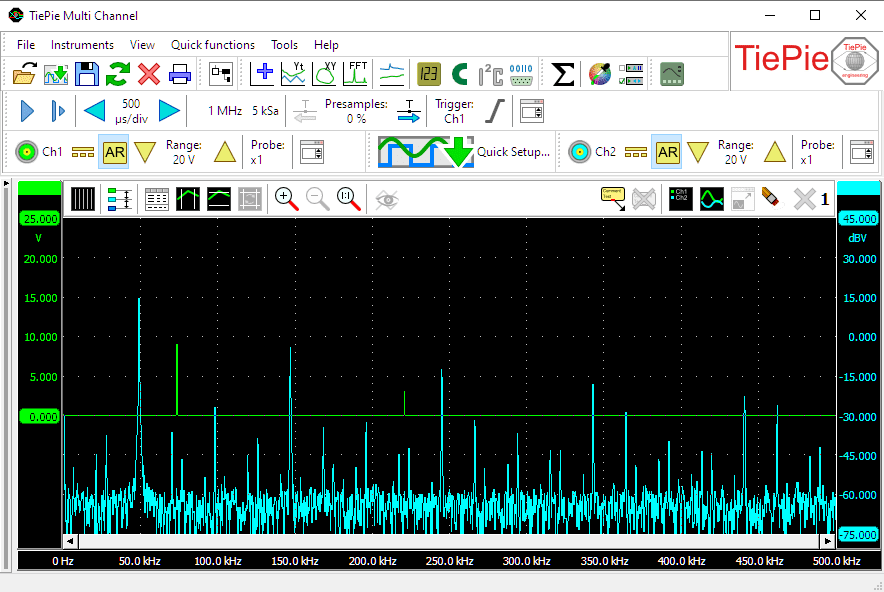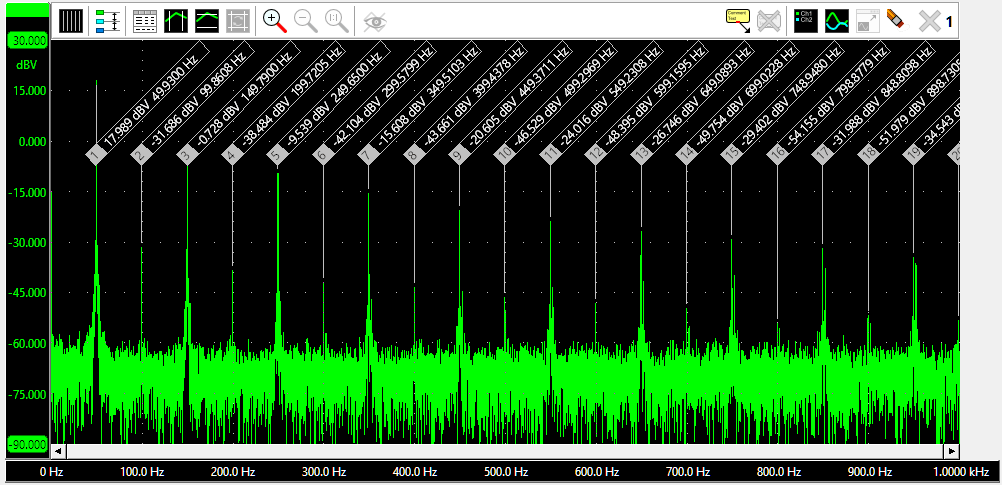A spectrum analyzer is an instrument that graphically displays signal amplitude against frequency, in the frequency domain. It will show which frequency components are present in a signal and how strong these are.
Not all electrical systems can be characterized properly in the time domain. Circuits like filters, amplifiers, oscillators, mixers, modulators and detectors can be characterized best by their frequency behavior. That frequency behavior is best obtained by observing the electrical signals in the frequency domain. To display the frequency domain, an instrument is needed that can distinguish different frequencies from each other and measure the signal size at the different frequencies. An instrument that can display the frequency domain is the spectrum analyzer.
In the time domain all frequency components of a signal are seen summed together. In the frequency domain, complex signals (signals composed of more than one frequency) are separated into their frequency components, where the amplitude of each component is displayed.
The frequency domain contains information which is not available in the time domain. Therefore the spectrum analyzer has certain advantages compared with an oscilloscope:
- With a spectrum analyzer small harmonic distortions on a signal can be displayed better than on an oscilloscope. A sine wave may look good in the time domain, however in the frequency domain the harmonic distortion is visible.
- A noise signal may look fully random in the time domain on an oscilloscope, in the frequency domain on a spectrum analyzer it can appear that one frequency is dominantly present.
- In the frequency domain it is very simple to determine carrier frequency, modulation frequency, modulation level and modulation distortion from a modulated signal (AM or FM).
Features of the Multi Channel software spectrum analyzer

The spectrum analyzer function in the Multi Channel oscilloscope software uses a Fast Fourier Transform to convert the time domain to the frequency domain. Various different windowing functions are available to minimize the effect of spectral leakage.
Spectrum analyzer graphs
The spectrum analyzer can have one or more graphs, each displaying one or more signals, where each graph can display different parts of a signal. Colors of all items in a graph can be set to any required value. Graph dimensions can be adjusted to any required size, graphs can be located in one single window or in separate windows, which can be located anywhere on the desktop.
Axes can be set to linear or logarithmic.
Each signal line in a graph can show peaks in the signal by placing markers in the top part of the graph, with lines to the actual peak. The magnitude of the peak is shown in the marker, as well as a time stamp. It can also show the harmonics, with harmonics number, frequency and magnitude.

Cursors are available to make on screen measurements, including determining the Total Harmonic Distortion in a signal. Signals can be given descriptive names and a legend is available to simplify identifying the displayed signals. Text labels can be placed to mark interesting parts of the signal(s).
To reveal all details of the measured signals, unlimited zooming is available in both vertical and horizontal direction. All zoom actions can be undone with an undo zoom function.
Convenient settings windows
To setup the instrument and the channels, convenient instrument settings windows and channel settings windows are available. They give access to all relevant settings of the instrument and channel, making easy tweaking of settings possible.
Touchscreen friendly toolbars
An instrument toolbar and channel toolbars are available for each detected instrument. The convenient toolbars provide clear buttons for all settings of the instrument and its channels. They show the current settings of the instrument and allow to change all settings. The large buttons are very suitable for touchscreen operation.
The toolbars are fully configurable through the program settings. You can set the button size, add or remove buttons and change the order of the buttons.
Mathematical operations in the spectrum analyzer
Mathematical operations can be performed on the measured data:
Storing spectrum analyzer measurement data
Measurement data can be stored in various different ways:
- Saved to disk in various different data file formats
- Printed, with customizable layout and colours
- Stored as image file, in various common formats
Spectrum analyzer controls
Controlling the spectrum analyzer is done through customizable instrument and channel toolbars, through instrument and channel settings windows and popup menus and by hotkeys. A quick function toolbar is available for often used functions.
